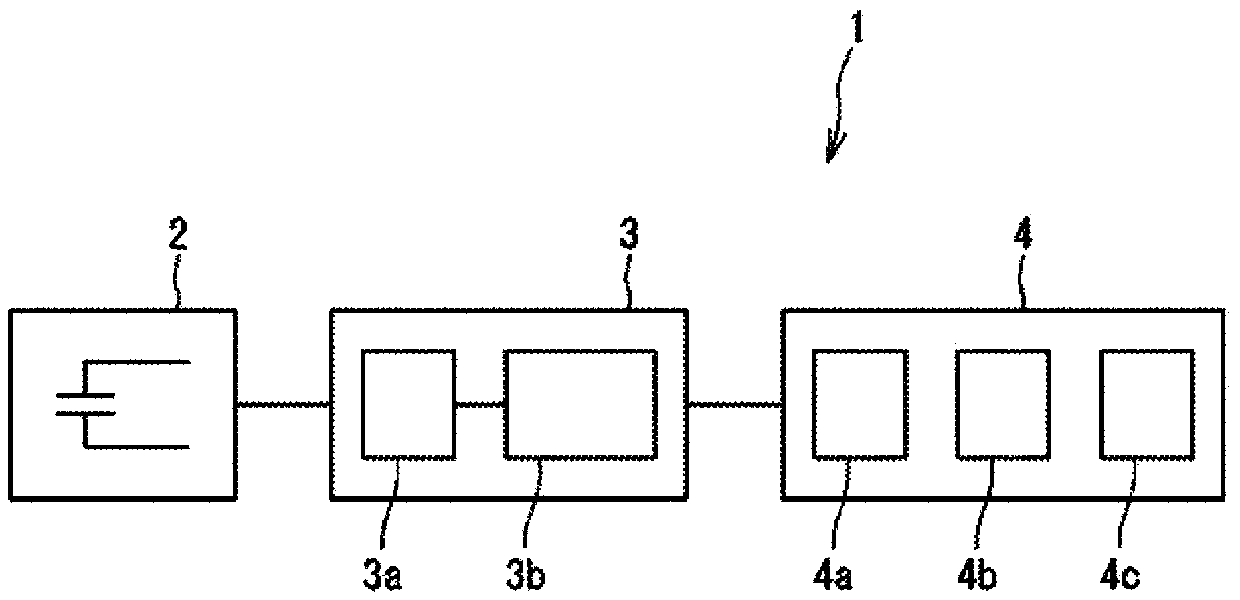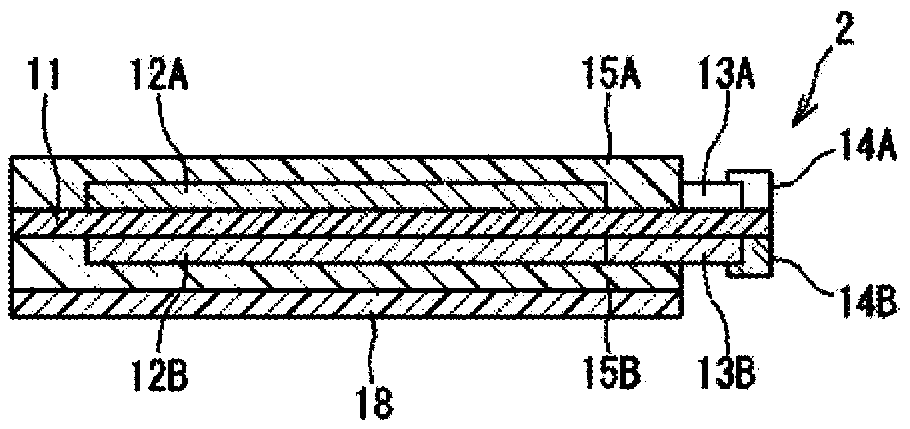Sensing device
A technology of sensing devices and sensing elements, applied in the direction of sensors, measuring devices, electromagnetic measuring devices, etc., can solve the problems of complex preparation, difficulty in carrying the measurement system, and inability to measure the movement of the shooting unit, etc., and achieve easy portability and miniaturization Effect
- Summary
- Abstract
- Description
- Claims
- Application Information
AI Technical Summary
Problems solved by technology
Method used
Image
Examples
Embodiment 1
[0303] (Example 1: Measurement of flexion extension of elbow)
[0304] As shown in FIG. 6( a ), the sensor element 222 was attached to the elbow of the subject's left hand via the adhesive layer 28 .
[0305] Then, with the sensor element attached, the left elbow was flexed and stretched so that the amount of bending gradually increased, and the change in capacitance at this time was measured. The results are shown in Fig. 6(b).
[0306] As shown in the graph in Fig. 6(b), it can be seen that in the bending and stretching movement of the elbow joint, the electrostatic capacitance gradually increases with the gradual increase of the bending amount.
Embodiment 2
[0307] (Example 2: Measurement of respiration)
[0308] As shown in FIG. 7( a ), the sensor element 222 was attached to the subject's left chest via the adhesive layer 28 .
[0309] Then, with the sensing element attached, perform the following three actions: (1) Stop breathing for 10 seconds, (2) Breathe naturally for 10 seconds, (3) Take a deep breath for 10 seconds, and measure the electrostatic capacitance during each action . The results are shown in Fig. 7(b).
[0310] As shown in the graph in Fig. 7(b), it can be seen that the electrostatic capacitance hardly changes in the operation of (1), and the electrostatic capacitance increases in the operations of (2) and (3), respectively corresponding to the size of breathing. Furthermore, it can be estimated that in the actions of (2) and (3), about 2.5 breaths are performed within 10 seconds.
Embodiment 3
[0311] (embodiment 3: measurement of pronunciation)
[0312] As shown in FIG. 8( a ), the sensor element 222 was attached to the subject's left cheek via the adhesive layer 28 .
[0313] Then, in the state where the sensor element was attached, the Japanese pronunciation "ぁ(a) ぃ(i) ぅ(u) ぇ(e) ぉ(o)" was uttered, and the Electrostatic capacitance. The results are shown in Fig. 8(b).
[0314] As shown in the graph in FIG. 8( b ), it can be seen that the capacitance changes according to the type of pronunciation of "ぁぃぅぇぉ".
PUM
 Login to View More
Login to View More Abstract
Description
Claims
Application Information
 Login to View More
Login to View More - R&D
- Intellectual Property
- Life Sciences
- Materials
- Tech Scout
- Unparalleled Data Quality
- Higher Quality Content
- 60% Fewer Hallucinations
Browse by: Latest US Patents, China's latest patents, Technical Efficacy Thesaurus, Application Domain, Technology Topic, Popular Technical Reports.
© 2025 PatSnap. All rights reserved.Legal|Privacy policy|Modern Slavery Act Transparency Statement|Sitemap|About US| Contact US: help@patsnap.com



